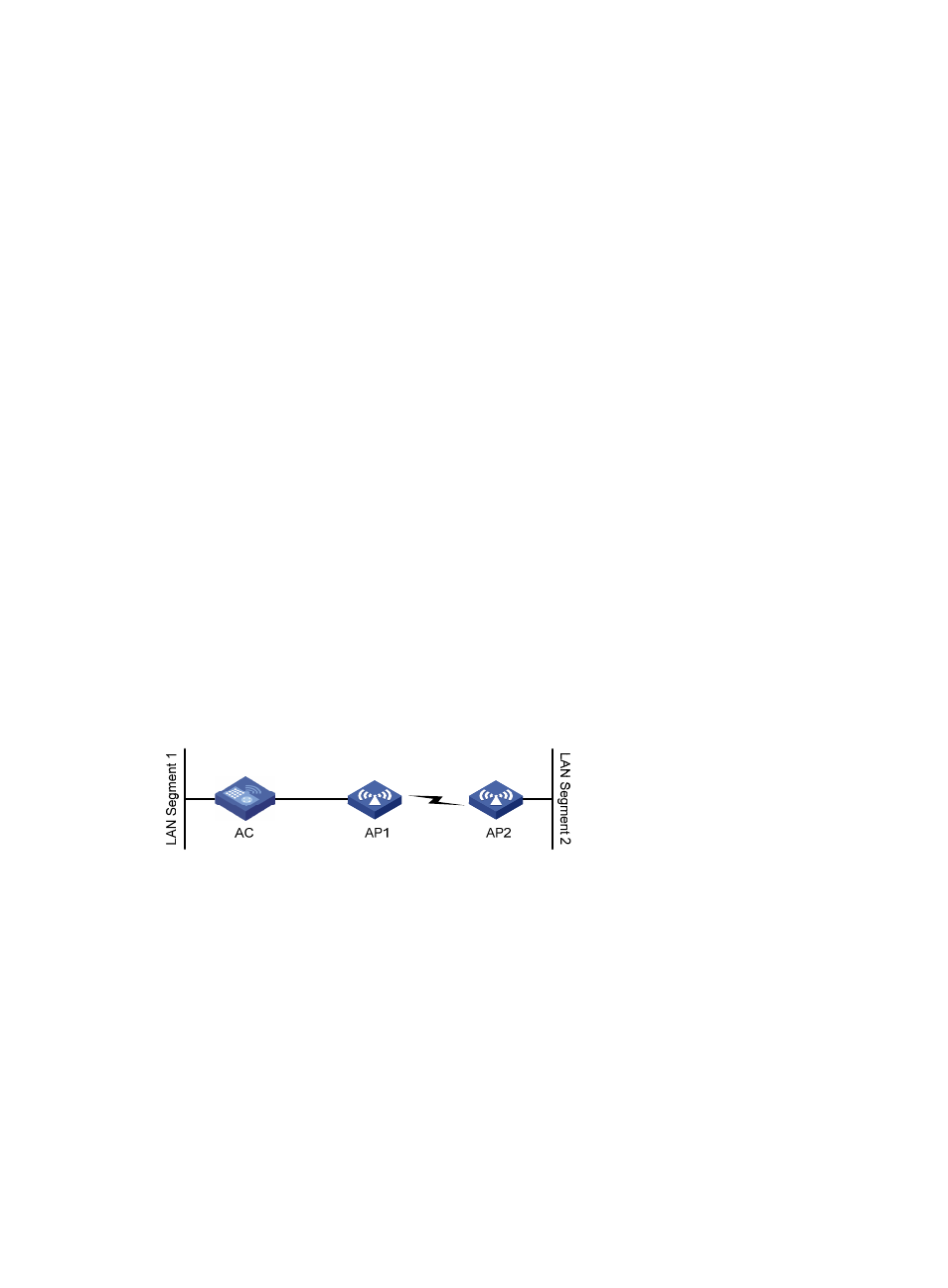Basic concepts in wds, Advantages of wds, Deployment scenarios – H3C Technologies H3C WX3000E Series Wireless Switches User Manual
Page 187

175
Basic concepts in WDS
The WDS feature provides a single hop wireless link between two APs, including:
•
Link formation—Connections made based on the messages exchanged between two peer nodes.
•
Link security—Provides PSK plus CCMP security.
Advantages of WDS
At present, 802.11 based WLAN technologies are widely applied in the home, SOHO, and enterprise
scenarios.
APs are connected through cables, switches, routers and power supplies. As a result, the wireless
network is complex, costly and no longer wireless, and it requires a lot time to deploy a network.
WDS provides wireless connectivity between separate LAN segments to simplify WLAN deployment.
WDS has the following advantages:
•
Low cost for high performance deployment options
•
Expansion availability without the need for new wiring or more access points
•
Easy deployment in scenarios such as metros, companies, offices, large warehouses, manufacturing
divisions, ports, and waterfronts.
Deployment scenarios
The WDS feature supports the following three topologies.
Topology 1 Peer to Peer Connection [Point to Point]: In this topology, two neighbor MPs form a bridge
between two LANs. In
, AP 1 and AP 2 bridge 802.3 data between LAN segments 1 and 2 by
converting it to 802.11s format and sending it over a wireless link.
Figure 91 WDS point to point topology
Topology 2 Centralized Bridging [Point to multipoint]: In this topology, a centralized bridging device
forms wireless links with multiple MPs to bridge data among multiple LAN segments. As shown in
, data transferred between different LAN segments goes via AP 1.
- H3C WX5500E Series Access Controllers H3C WX3500E Series Access Controllers H3C WX2500E Series Access Controllers H3C WX6000 Series Access Controllers H3C WX5000 Series Access Controllers H3C WX3000 Series Unified Switches H3C LSWM1WCM10 Access Controller Module H3C LSUM3WCMD0 Access Controller Module H3C LSUM1WCME0 Access Controller Module H3C LSWM1WCM20 Access Controller Module H3C LSQM1WCMB0 Access Controller Module H3C LSRM1WCM2A1 Access Controller Module H3C LSBM1WCM2A0 Access Controller Module H3C WA3600 Series Access Points H3C WA2600 Series WLAN Access Points